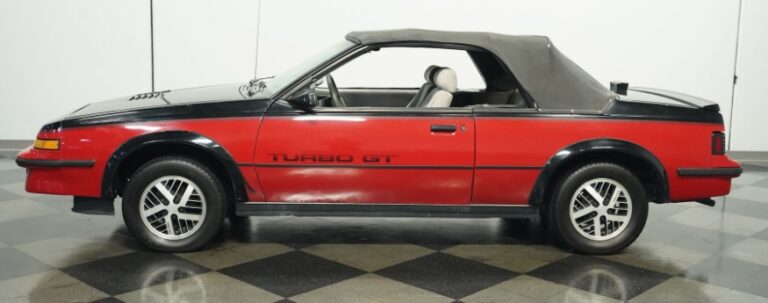The Evolution of the Ford Granada
The Ford Granada, a name synonymous with innovation, luxury, and performance in the automotive world, enjoyed a legacy that spanned multiple decades and continents. Its evolution encompassed various models, trim levels, and significant design shifts that catered to diverse markets. This article delves into the history of the Ford Granada, tracing its journey from its inception in the early 1970s to its final production years, while highlighting key models and trim levels.
Origins of the Granada: 1972 – 1985
First Generation (1972-1977)
The Ford Granada was first introduced in September 1972 in Europe to compete in the increasingly popular mid-sized car segment. The model was positioned as a more upscale choice compared to its predecessors like the Ford Cortina. The Granada’s design was distinct, borrowing some elements from the Ford Torino sold in the North American market. Designed by the Ford of Europe team, the vehicle featured a modern look with a long hood and short rear deck, offering both sophistication and practicality.
Models and trim levels included:
- Base: The entry-level version, equipped with essential features and a modest 1.6-liter engine.
- GL (Granada Luxury): Adding a touch of comfort and style, the GL trim introduced enhanced upholstery and upgraded interior features.
- Ghia: This high-end trim level offered luxurious enhancements like leather seating, wood trim, and additional chrome accents.
- V6: Available with a 2.0-liter or 2.3-liter six-cylinder engine; this model catered to performance enthusiasts seeking a bit more power.
The Ford Granada quickly gained a reputation for its reliability and comfort, resulting in strong sales across Europe.
Second Generation (1977-1985)
In 1977, Ford debuted the second-generation Granada, featuring a more rounded design and improved aerodynamics. A focus on comfort and an expanded engine lineup characterized this model.
Trim levels offered included:
- Base: Retained a focus on affordability with basic features.
- L: Offered additional comfort features over the base model.
- GL: Introduced smart interior styling such as upgraded seating and more extensive trim.
- Ghia: Continued to symbolize luxury within the Granada range, with enhanced features and styling.
- 2.8i and 2.8 Ghia: These sportier models came equipped with a powerful 2.8-liter V6 engine, providing a more spirited drive.
The second-generation Granada maintained popularity thanks to its comfortable ride, versatile engine options, and relatively spacious interior. Despite the growing competition in the market, the Granada remained a favorite among families and professionals alike.
North American Version (1975-1982)
Ford introduced the Granada to the North American market in 1975, aimed at consumers desiring a blend of size, luxury, and performance. The North American version shared little with its European counterpart but instead was based on the Ford Maverick platform.
North American Trim Levels
- Base: Basic features designed to keep costs low without sacrificing comfort.
- GL: A step up in terms of interior quality and additional features.
- Luxury: This trim level provided more upscale amenities, such as plush seating and optional leather.
- Designer Series: Offering unique styling elements and upscale materials, the Designer Series catered to a more affluent clientele.
Performance Models
The late 1970s saw the introduction of the Granada with the 5.0-liter V8 engine option known as the Ford Granada Sport. This version provided enthusiasts with a more performance-oriented experience, combining the elegance of the design with considerable power.
Decline and Transformation (1985-1994)
By the mid-1980s, consumer tastes began to shift towards smaller, more fuel-efficient vehicles, and Ford responded by discontinuing the Ford Granada nameplate in North America in 1982. Meanwhile, Europe continued to refine and produce the vehicle, leading to the launch of the third generation.
Third Generation (1985-1994)
The third-generation Granada launched in Europe in 1985 was renamed the Ford Scorpio in 1986. It offered a completely new design philosophy featuring a more streamlined and aerodynamic shape, and advanced engineering, including a focus on safety and fuel efficiency.
Trim levels included:
- Base: Aimed at budget-conscious buyers while offering a comprehensive array of standard features.
- L: Offered additional specifications and styling.
- GL: Enhanced comfort and bold styling marked this trim.
- Ghia: Preserved its status as the luxury variant, offering a comprehensive list of features that showcased Ford’s commitment to quality.
- Sport: Introduced for enthusiasts, combining advanced performance with dynamic styling.
The third generation continued to build on the legacy established by earlier versions while reflecting the changing automotive landscape of the late 1980s and early 1990s.
.
SEARCHING for those hard to find FORD manuals, guides & books?
This place has you covered! SEE All FORD Manuals From 1920 – 1989.
CHOOSE the year of your vehicle:

.
Goodbye Granada: The End of an Era
The Ford Granada nameplate was eventually phased out in Europe in 1994, marking the end of an era for this iconic vehicle. Ownership of the brand transitioned entirely towards modern cars, which demanded agile designs, fuel efficiency, and a move toward environmentally sustainable production.
Legacy of the Ford Granada
Throughout its production, the Ford Granada represented Ford’s adaptability to market demands and consumer preferences. The vehicle was celebrated for its comfort, reliability, and relatively upscale features for the mid-sized class.
Though the Granada nameplate has since been retired, its contributions to both European and North American markets are undeniable. Today, classic car enthusiasts and collectors often seek original models from both continents, ensuring that the Ford Granada’s story lives on, reminding us of a transformative period in automobile history.
Conclusion
The Ford Granada journey across decades encapsulates an era of evolution that blends practicality with an emphasis on comfort and style. From its inception in 1972 through its diverse range of models and trim levels, the Granada left an indelible mark on the automotive landscape. Even today, its legacy serves as a reminder of how the automotive industry can evolve in response to changing consumer desires, setting the stage for future innovations.








